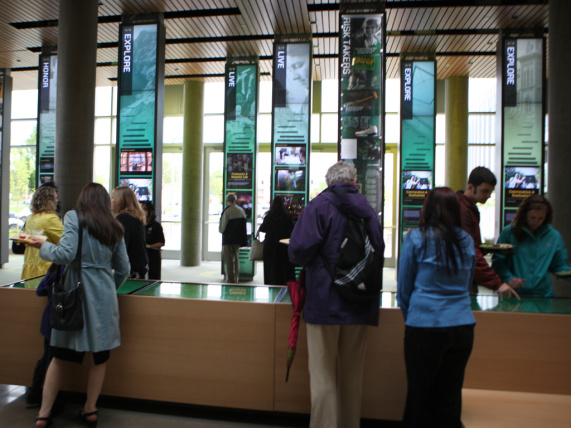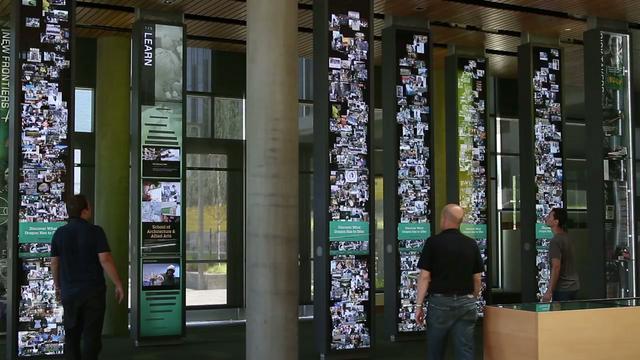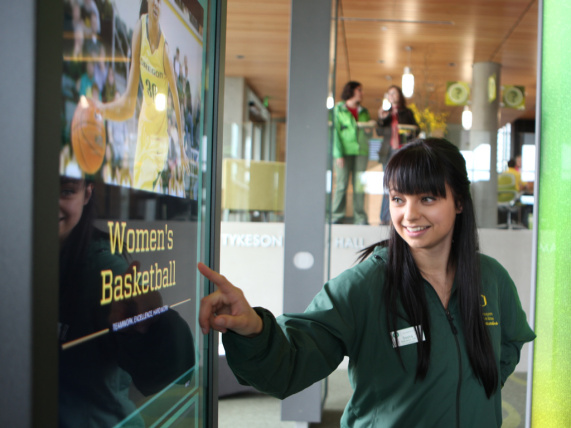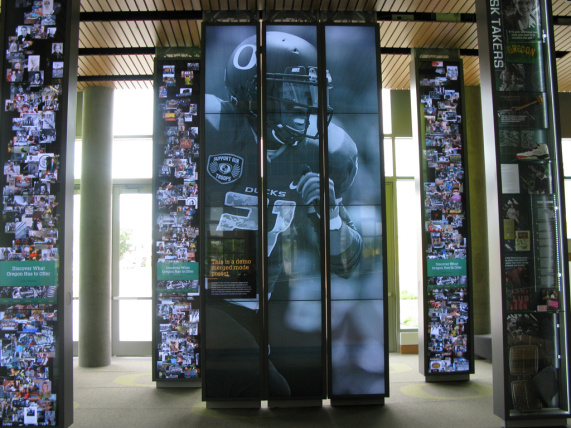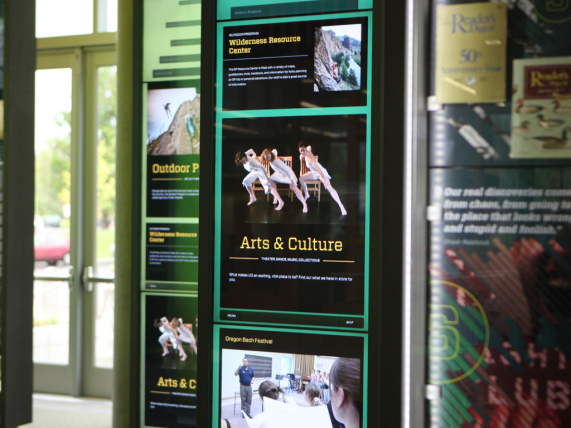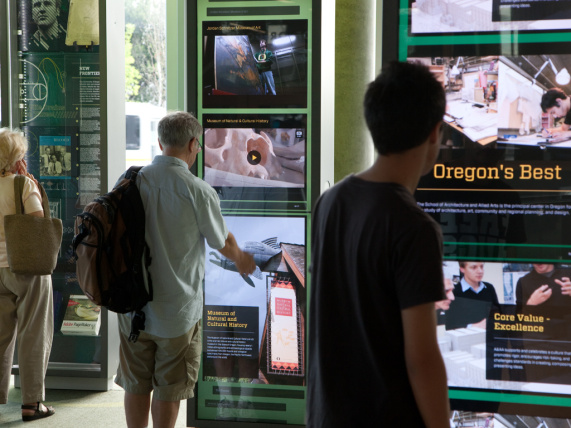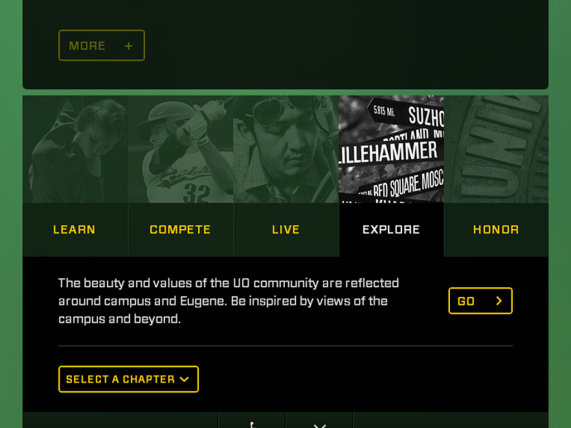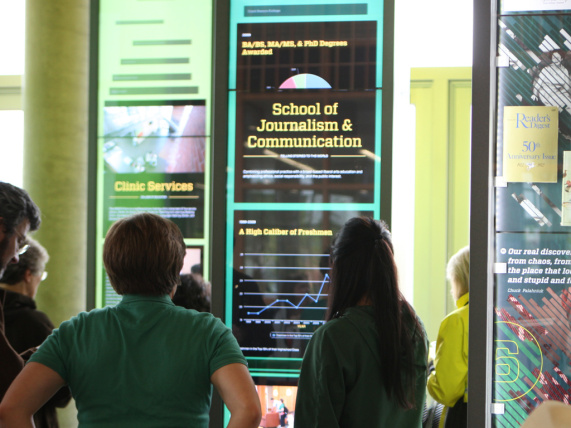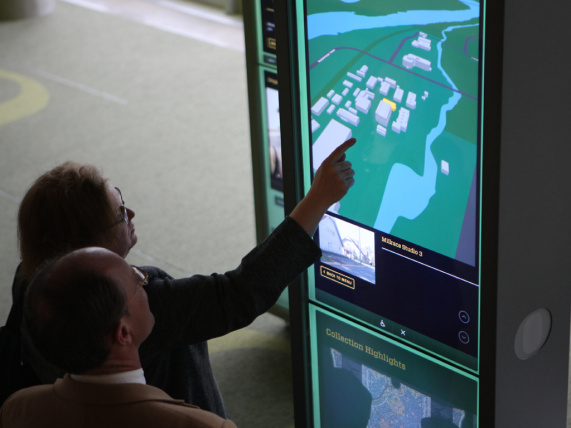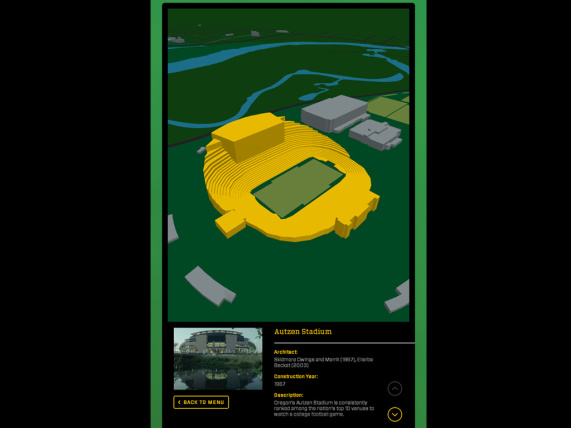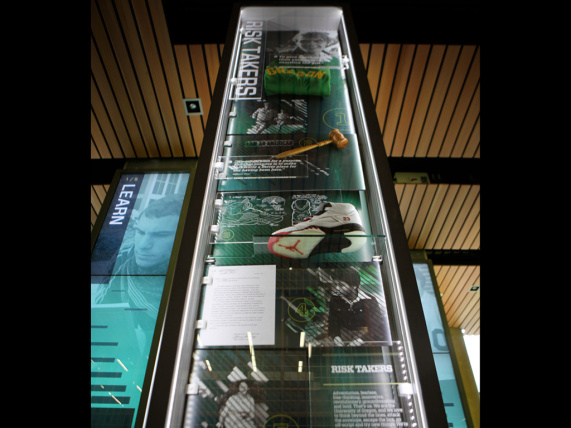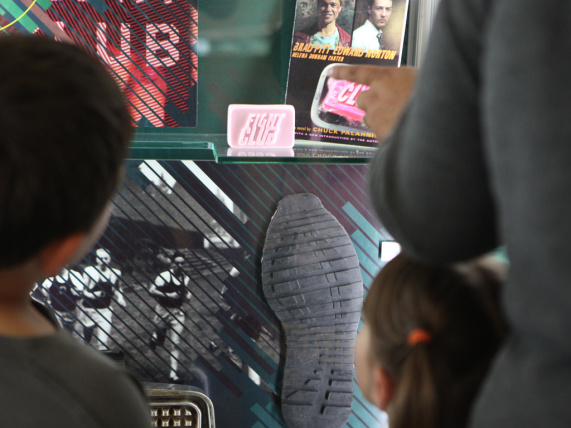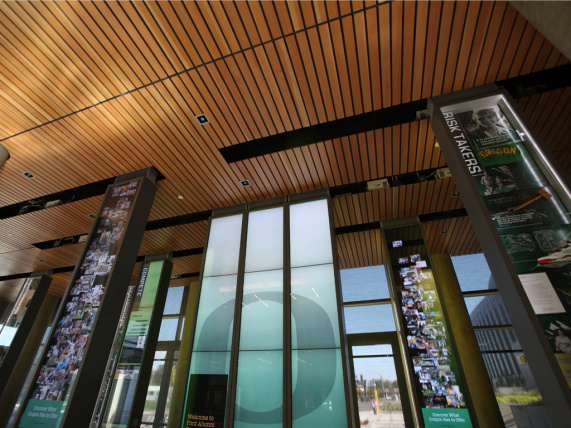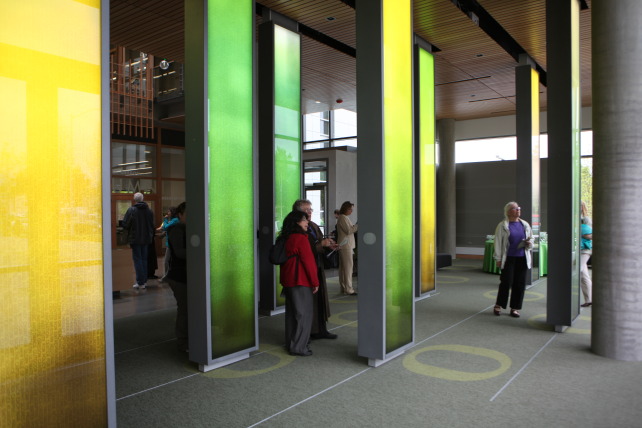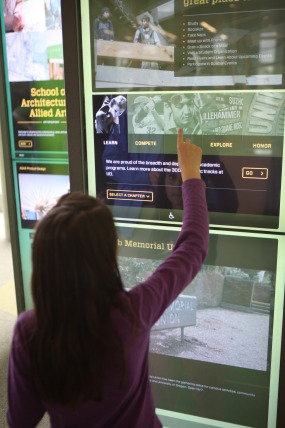Oregon Cascades
Nine towering panels filled with interactive media and artifacts reveal the past, present, and possibilities of the University of Oregon experience.
Staircases angle through the vaulted atrium of the Ford Alumni Center and flow into the Interpretive Center where Ducks connect, where visitors are welcomed, and prospective students congregate before their campus tours. This 2,000-square-foot light-drenched space is filled with six interactive media Cascades and three artifact-filled Cascades. The stories and objects they feature preserve the legacy of the alumni who defined the University while the dynamic database that fuels them serves media and information to recruit new generations of Oregon alumni.
The media Cascades are touch-sensitive floor-to-ceiling displays that present movies, images, slide shows, text, infographics and maps reflecting the university as a whole. Like the sections of a bookstore, each Cascade is devoted to a different subject matter: LEARN (Academics), COMPETE (Athletics), LIVE (Student Life), EXPLORE (Campus and Community), and HONOR (Notable Ducks). The media was designed to flow through the Cascades like a waterfall of content, introducing the diversity of opportunities—academic, athletic, social, recreational—that define the University of Oregon experience. Visitors can simply stand and watch to see all the university has to offer, while more active visitors could swipe across the Cascade to navigate through stories, touch to dig deeper into specific areas, or access menus to go directly to the information they seek.
Through a powerful, custom content management system, stakeholders across the university can log onto an intranet and modify their respective content areas. They can select between dozens of templates, upload and crop images, add videos, create slide shows, and add whole sections to their themes.
In addition to the storytelling features, media Cascades have a dynamic 3D campus mapping feature that pulls from the university’s information services database. New buildings can be added dynamically, and each story component in the program can link directly to a feature on the map. Dozens of dynamic infographics sprinkled through the content also pull on university databases to serve the most current data about the student body, alumni, or programs.
The three artifact Cascades are filled with an eclectic assortment of objects that testify to the enduring values of the University and offer a visual alternative to the surrounding media cascades. Inventions, designs, and achievements of alumni are celebrated. Defining events in the history of the university are featured. Original and facsimile documents, photographs, manuscripts, ephemera, and other objects are displayed like “wonder cabinets” juxtaposing diverse themes, values, and defining moments in UO’s history.
Evoking Eugene’s nickname “Track Town, USA,” the Cascade panels slide on a track system built into the floors and ceilings running throughout the Interpretive Center. The Interpretive Center staff can slide the panels anywhere on the tracks, making the space adaptable for different events and reconfigurable for learned usage patterns. This flexible set of configurations reflects the University’s forward movement and celebrates the spirit of possibility and change at UO. In one configuration, three Cascades can be merged to form one large display, and the on-screen content can be easily customized for special events.
The nine Cascades have illuminated rear panels with translucent environmental graphics. Each subtly different in color and tone, they collectively read as a kind of glowing forest within the Center, inviting the outside world to enter the new front door to Oregon’s pioneering university.
